Sitting pretty: a show of Pierre Paulin's chairs goes on display at Centre Pompidou

Museum shows don’t usually begin by encouraging people to take a seat. But when the exhibition is dedicated to Pierre Paulin, whose 'Mushroom', 'Orange Slice', 'Tongue' and 'Ribbon' chairs have become part of the contemporary furniture canon, there’s something to be said for acquainting yourself with his sinuous 'Amphis' banquette (conceived for Expo Osaka in 1970). Just don’t settle in for too long; there’s plenty to see.
The Centre Pompidou’s first retrospective of the late French designer (who died in 2009) presents more than 100 Paulin pieces, including a collection of playful sketches donated by his family last year, maquettes of an unrealised residential concept for Herman Miller and singular models such as the 'Déclive' that were never put into large-scale production.
The show flows easily and without pretension, chronologically displaying his contributions for Thonet, Disderot and Artifort, before arriving at a biographical video projected on a double-sided screen and surrounded by re-editions of the Artifort seating by Ligne Roset. It was here that curator Cloé Pitiot spoke with Wallpaper* about the designer’s talent for combining the dynamism of form and colour with the essential quality of comfort.
‘You get the sense he’s a rigid man but, in fact, there’s so much poetry and suppleness in his pieces,’ she explains. ‘And there was a lot of humour to his approach too.’ Underlying his work, however, was ‘logic’, she adds. Indeed, the frame of 'F560', better known as the 'Mushroom' chair, reveals how beneath the biomorphic padded shape and stretchy fabric is a skeleton consisting of little more than three well-positioned metal rings.
Pitiot, who curated the Centre Pompidou’s exhibition on Eileen Gray in 2013, notes how she wanted this endeavour to feel inspired yet accessible. Hence Laurence Fontaine’s nod-to-Mod scenography, which features curvy curtains created by Petra Blaisse that both block and filter in light. Banners collaged with vintage advertising evoke the swish, Mad Men-esque lifestyle reinforced by the furniture.
This freshness and modernity likely encouraged the collaboration between Paulin and the Mobilier National, the government agency overseeing the French national furniture collection, and its design division ARC (Atelier de Recherche et de Création) on the refurbishment of the Louvre’s Grande Galerie in 1969, which in turn prompted President Georges Pompidou and his wife, Claude, to enlist his services in remodeling the private apartment of the Élysée Palace. Here, an archival video details no shortage of Paulin’s design considerations. Among them, he opted to line the soundproof walls with polyester, believing they wouldn’t retain food odours as strongly as natural fabric.
While visitors may not be able to test the five-legged, rattan swivel chair Paulin conceived for François Mitterrand, they will observe how he constantly challenged himself to reinterpret his own self-contained architectures without over-intellectualising the concepts. The 'Tongue' seat, for instance, cleverly gave way to the 'Face-à-Face' and 'Dos-à-Dos'. As Pitiot sums up, ’The designs don't age. I think he succeeded because he created seating that makes you feel good. You want to stay in them a while. Everyone who comes finds a comfortable space here.'
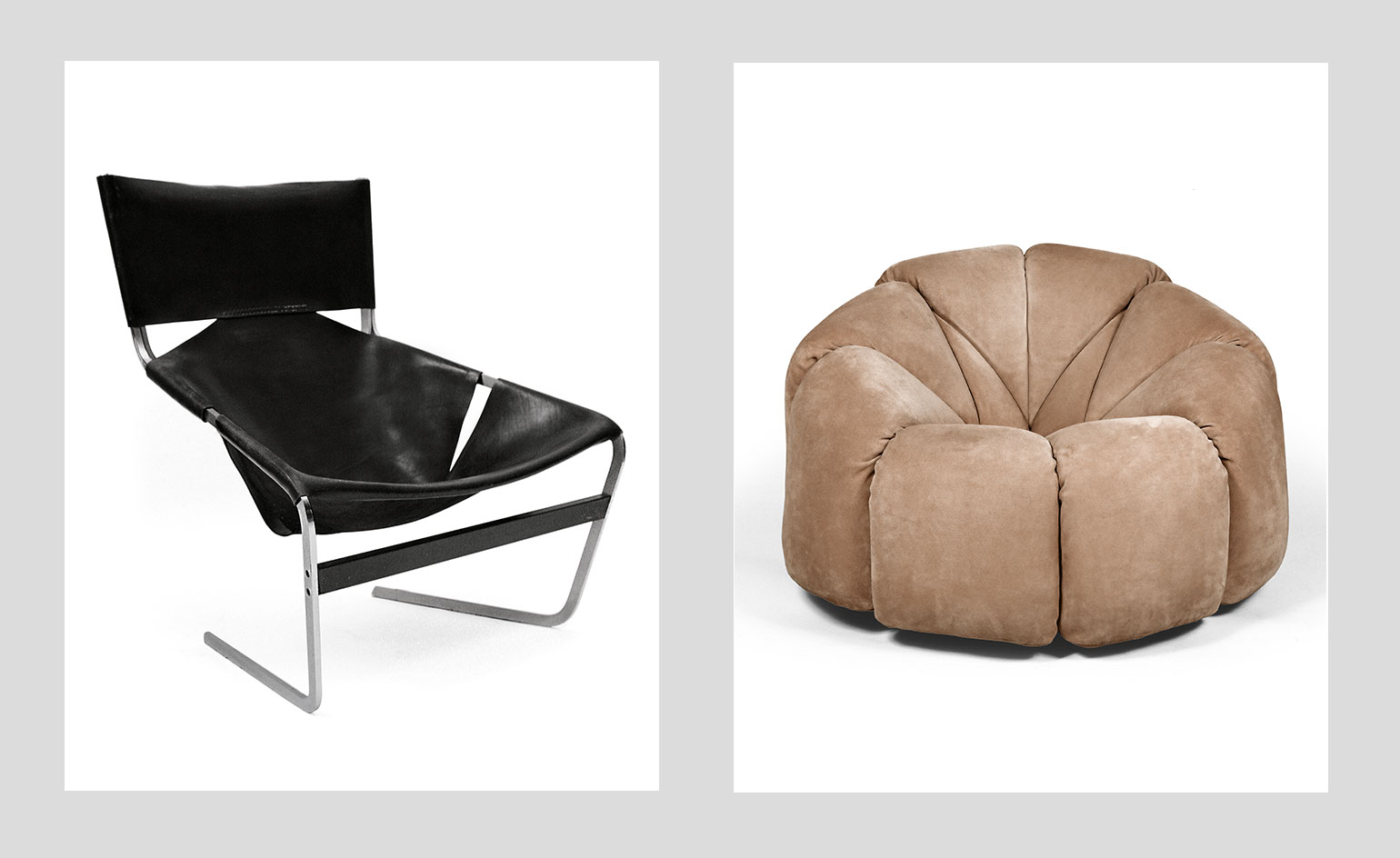
Paulin's 'Mushroom', 'Orange Slice', 'Tongue' and 'Ribbon' chairs have become part of the contemporary furniture canon. Pictured left: Fauteuil F444 chair, 1963. Pictured right: Fauteuil du salon des Tableaux.
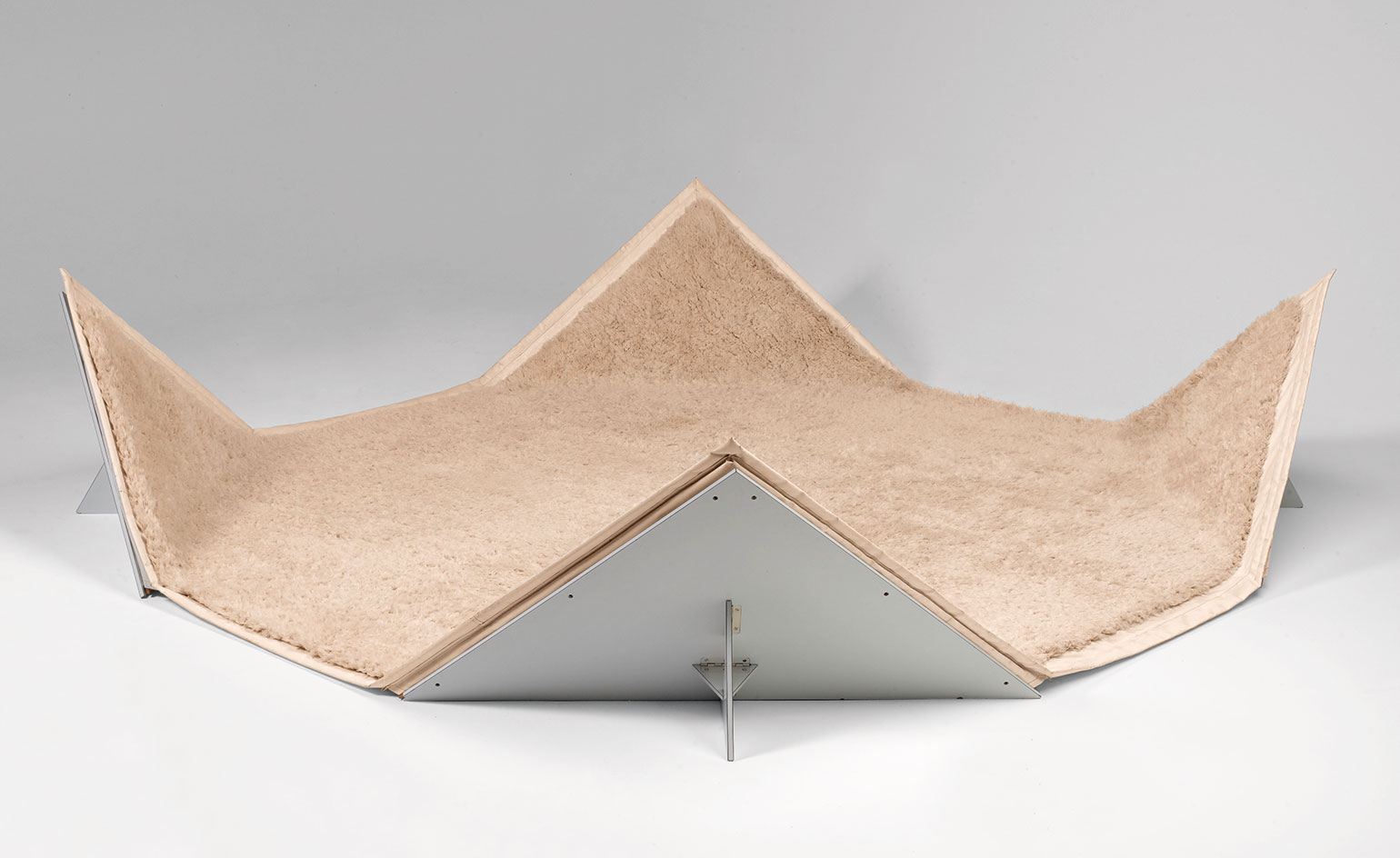
The Pompidou exhibition also includes a collection of playful sketches, maquettes of an unrealised residential concept for Herman Miller and singular models such as the 'Déclive' that were never put into large-scale production. Pictured: Tapis Siage, 1980

The show flows easily and without pretension, chronologically displaying his contributions for Thonet, Disderot and Artifort.
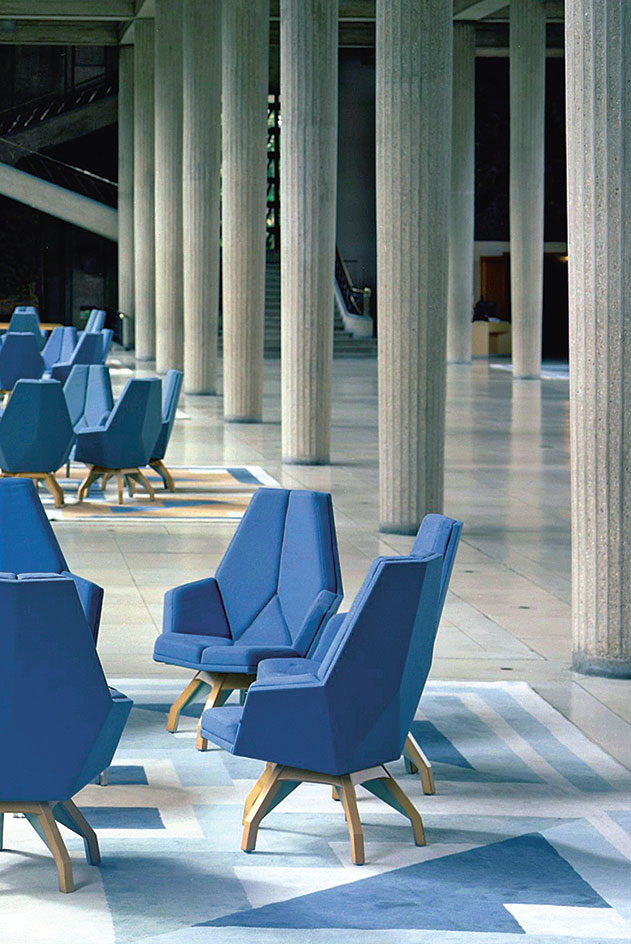
‘You get the sense he’s a rigid man but, in fact, there’s so much poetry and suppleness in his pieces,’ explains curator Cloé Pitiot. Pictured: interior from Palais d'Inéa, Paris, 1985.
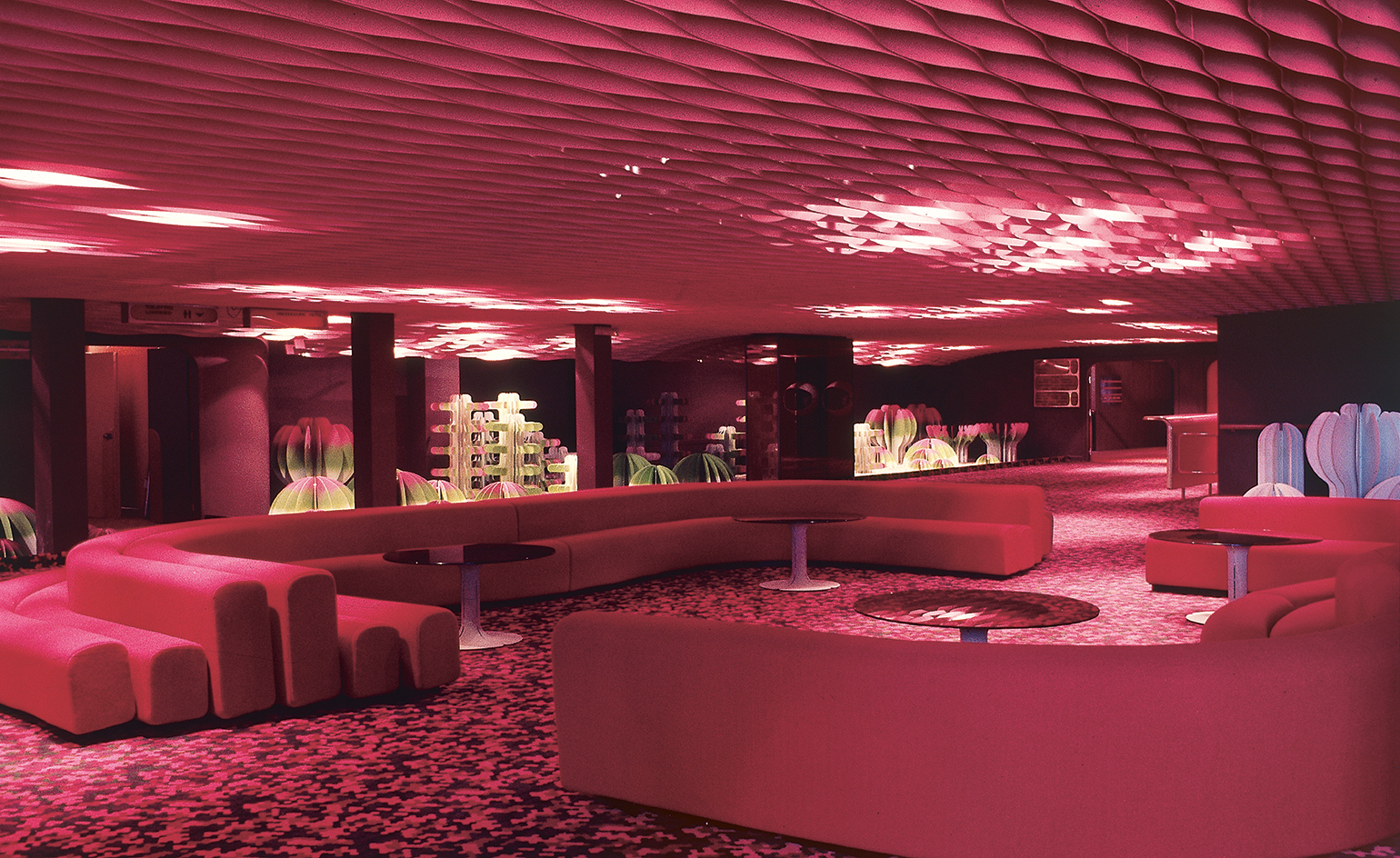
Paulin’s talent for combining the dynamism of form and colour with the essential quality of comfort is clear to see. Pictured: Paulin sofa designs in Hotel Nikko, Osaka, 1976.
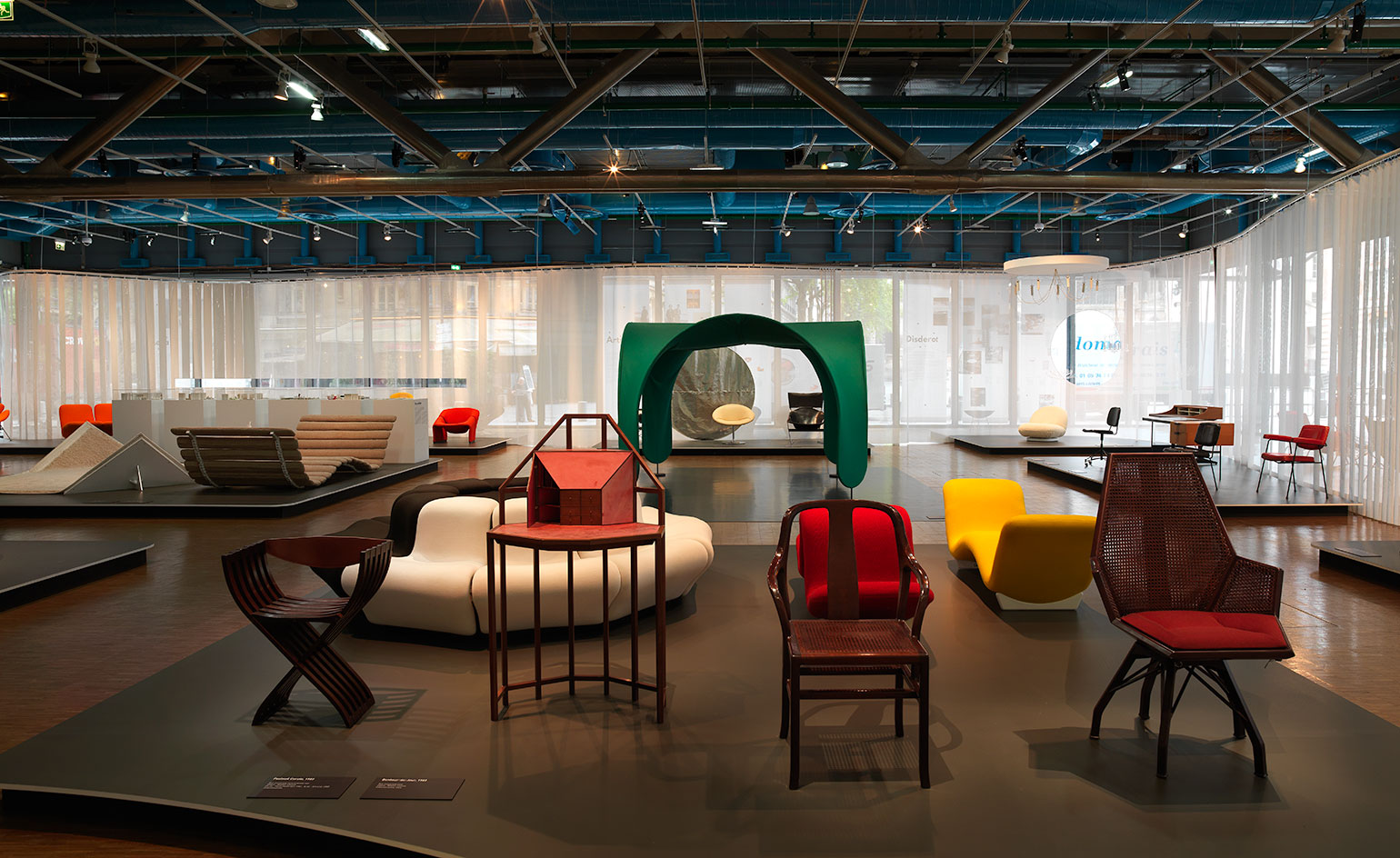
A biographical video surrounded by re-editions of the Artifort seating by Ligne Roset also feature in the exhibition.

President Georges Pompidou and his wife, Claude, enlisted Paulin's services in remodeling the private apartment of the Élysée Palace. Pictured: tables at the Élysée Palace, 1971.
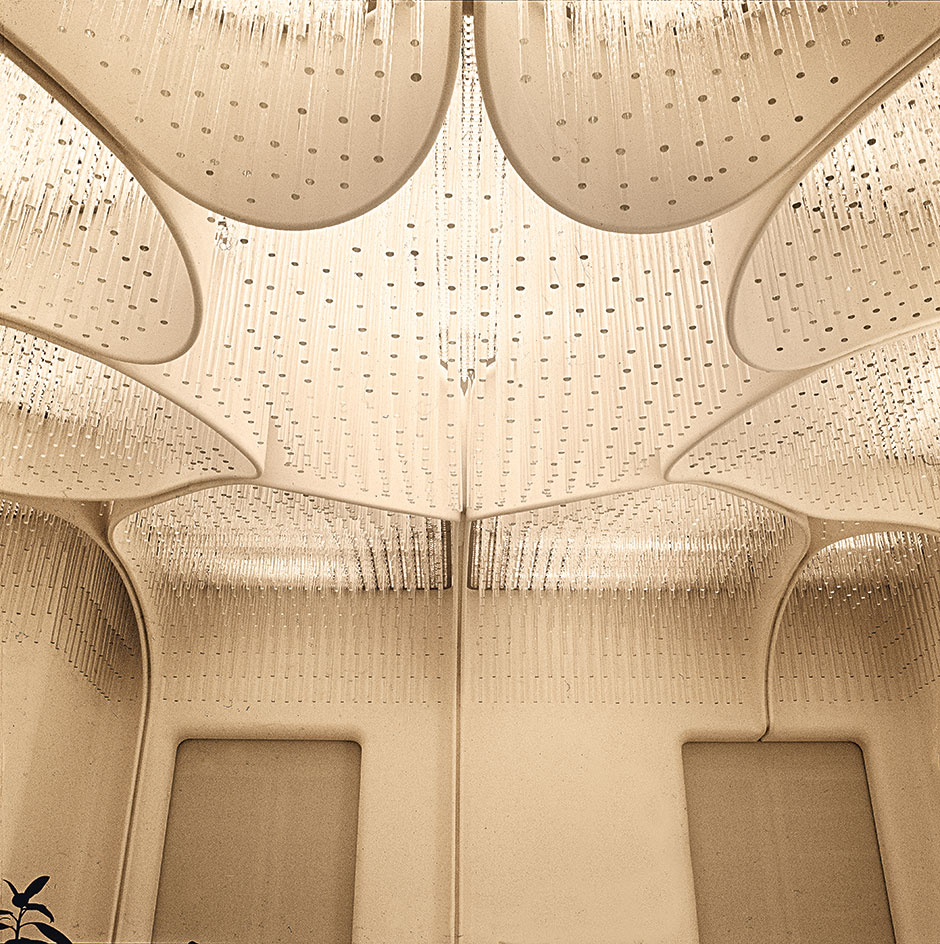
There, Paulin opted to line the soundproof walls with polyester, believing they wouldn’t retain food odours as strongly as natural fabric. Pictured: ceiling of the dining room at the Élysée Palace, 1971.

Pictured: smoking room at the Élysée Palace, 1971.
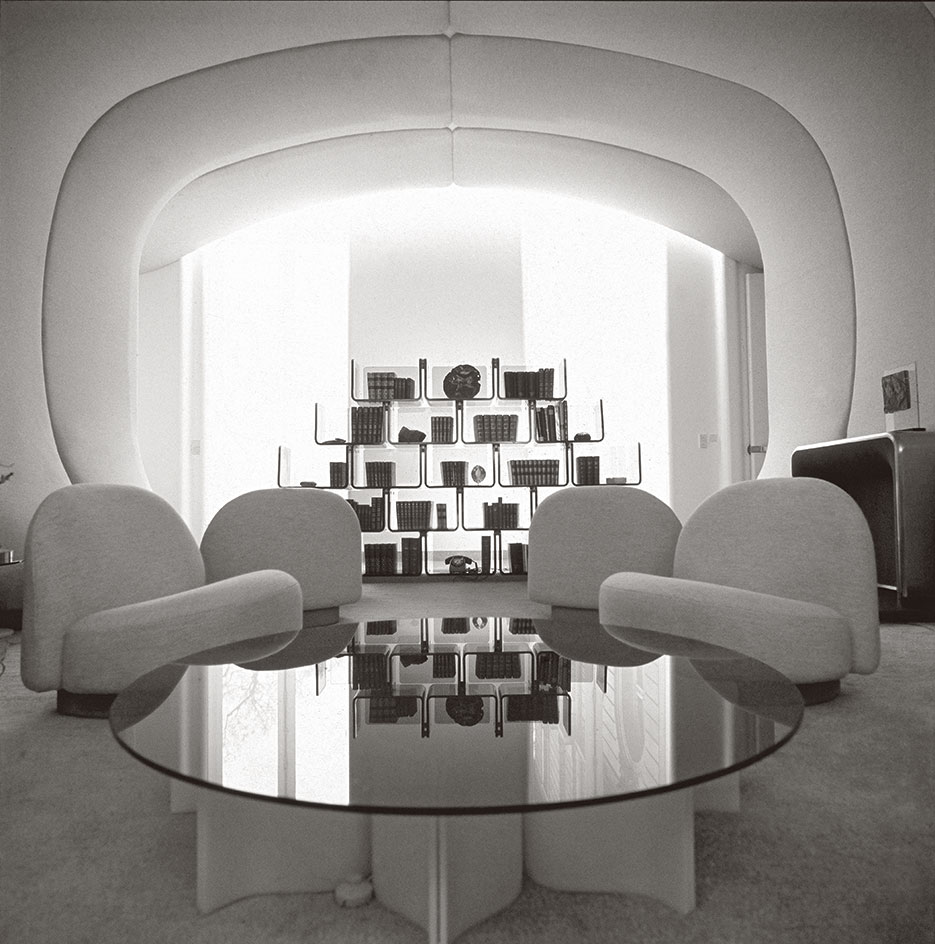
Pictured: smoking room at the Élysée Palace, 1971.

The 'Tongue' seat, for instance, cleverly gave way to the 'Face-à-Face' and 'Dos-à-Dos', pictured.

Pitiot sums up, ’The designs don't age. I think he succeeded because he created seating that makes you feel good. You want to stay in them a while. Everyone who comes finds a comfortable space here.' Pictured left: Fauteuil CM170 dit Tripode cage, 1955.
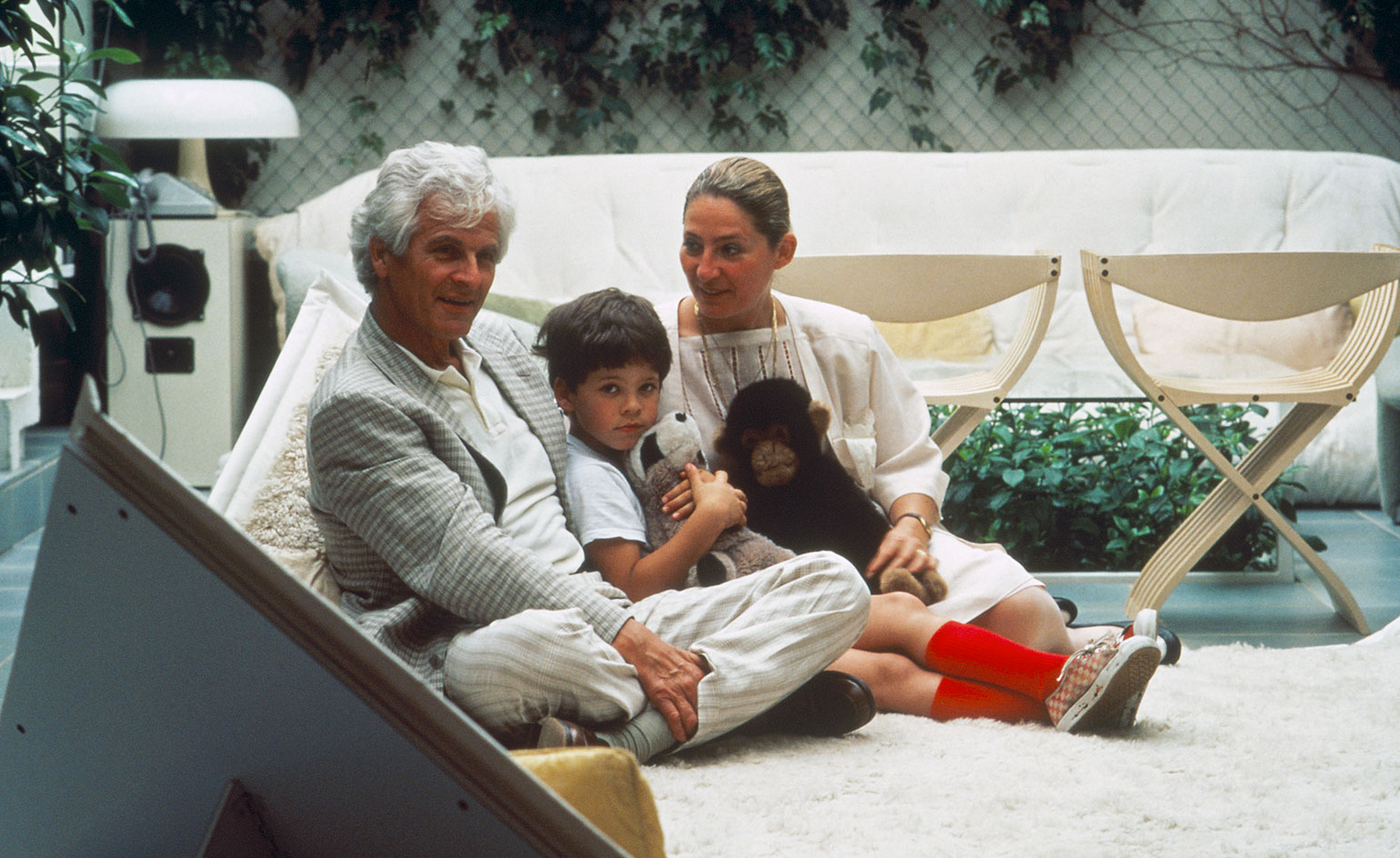
Pictured: Pierre, Benjamin and Maïa Paulin in their Parisian apartment.
INFORMATION
’Ouverture: Pierre Paulin’ is on view until 22 August. For more information, visit the Centre Pompidou’s website
ADDRESS
Centre Pompidou
Place Georges-Pompidou
75004 Paris
Receive our daily digest of inspiration, escapism and design stories from around the world direct to your inbox.
-
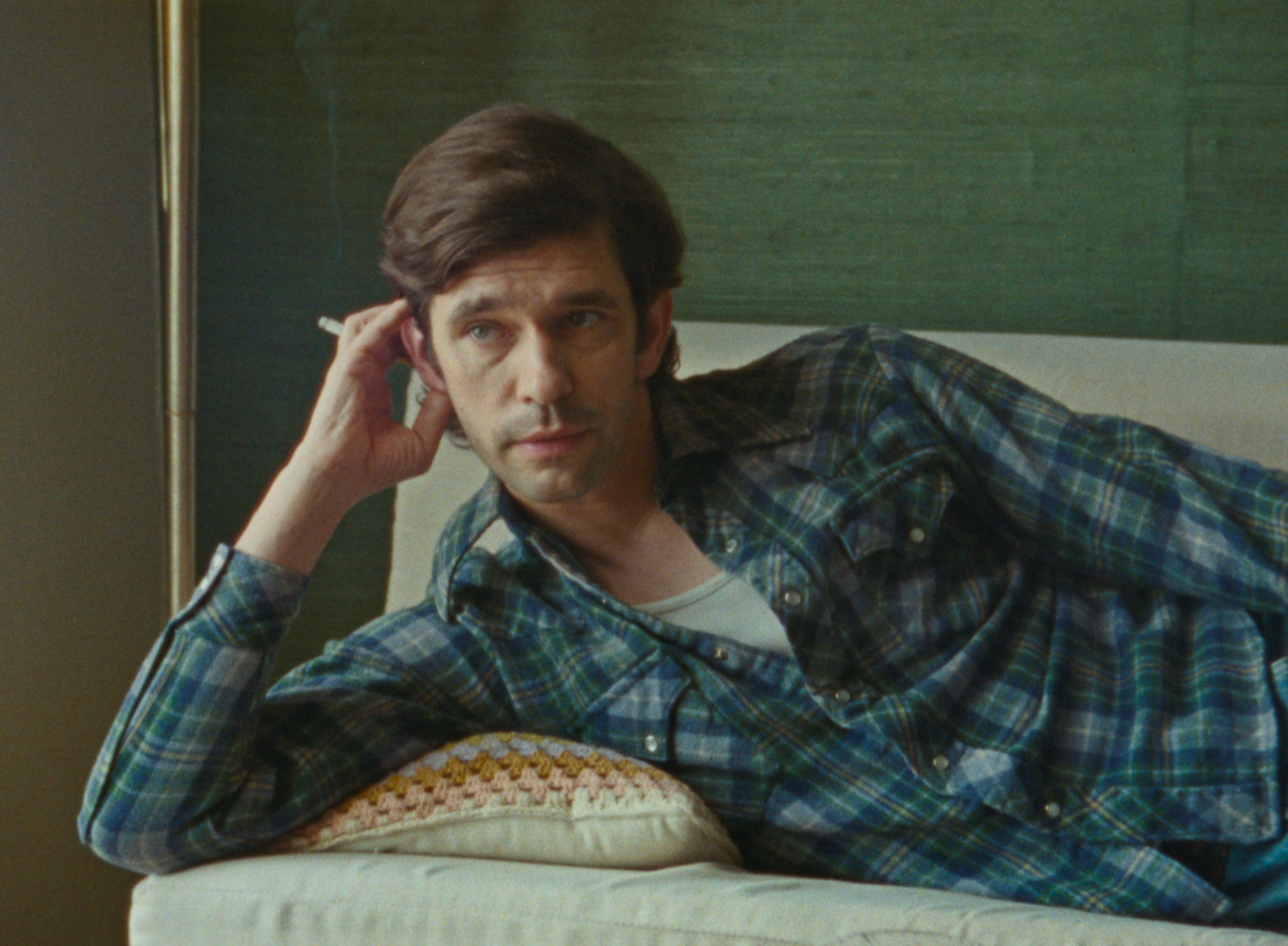 Can the film 'Peter Hujar's Day' capture the essence of the elusive artist?
Can the film 'Peter Hujar's Day' capture the essence of the elusive artist?Filmmaker Ira Sachs and actor Ben Whishaw bring Peter Hujar back to the front of the cultural consciousness
-
 New tech dedicated to home health, personal wellness and mapping your metrics
New tech dedicated to home health, personal wellness and mapping your metricsWe round up the latest offerings in the smart health scene, from trackers for every conceivable metric from sugar to sleep, through to therapeutic furniture and ultra intelligent toothbrushes
-
 Out of office: The Wallpaper* editors’ picks of the week
Out of office: The Wallpaper* editors’ picks of the week'Tis the season for eating and drinking, and the Wallpaper* team embraced it wholeheartedly this week. Elsewhere: the best spot in Milan for clothing repairs and outdoor swimming in December
-
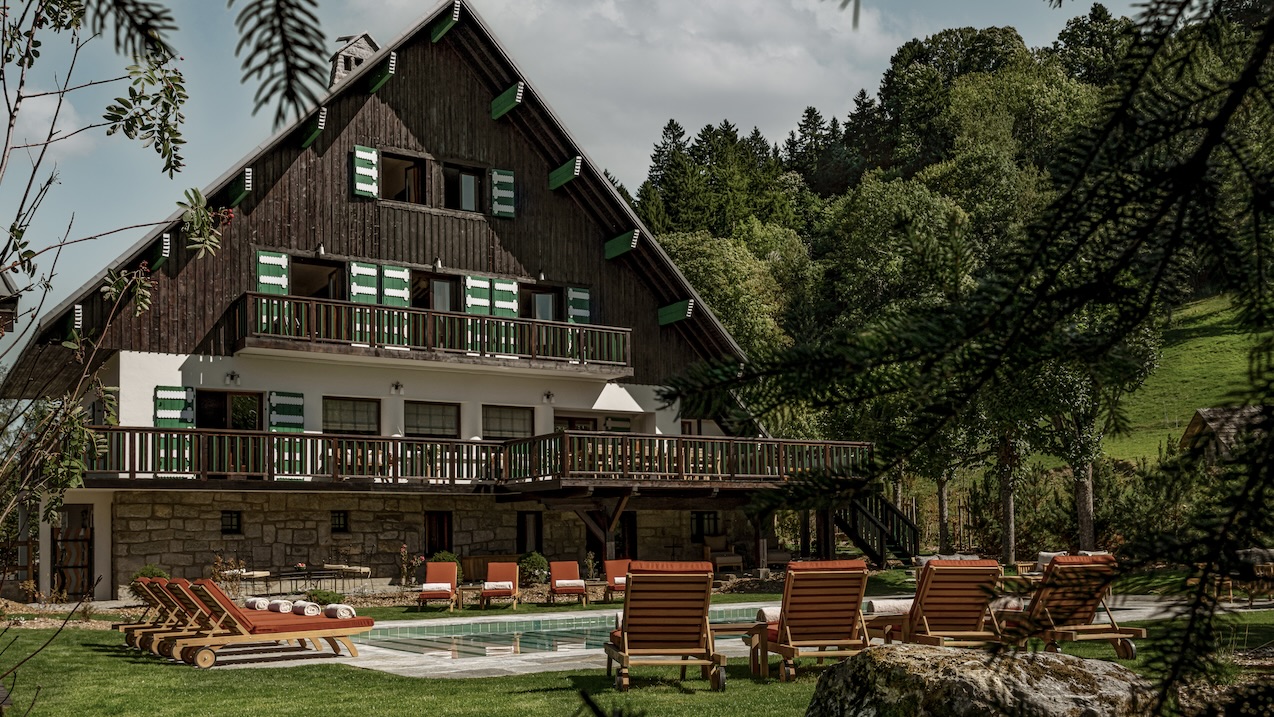 This Alpine chalet rejects the ‘modern ski’ aesthetic to embrace art deco
This Alpine chalet rejects the ‘modern ski’ aesthetic to embrace art decoOriginally designed by architect Henry Jacques Le Même, a key figure in shaping the Alpine style, Le Sarto in Megève, France, has been captivatingly transformed by interior architecture studio Claves
-
 Aussie vibes meet Parisian grandeur? This Sydney apartment pulls off the unlikely combination
Aussie vibes meet Parisian grandeur? This Sydney apartment pulls off the unlikely combinationLongtime clients of Dylan Farrell Design trusted the studio to go bold with the gut renovation of their Sydney flat – now an intriguing study in contrasts
-
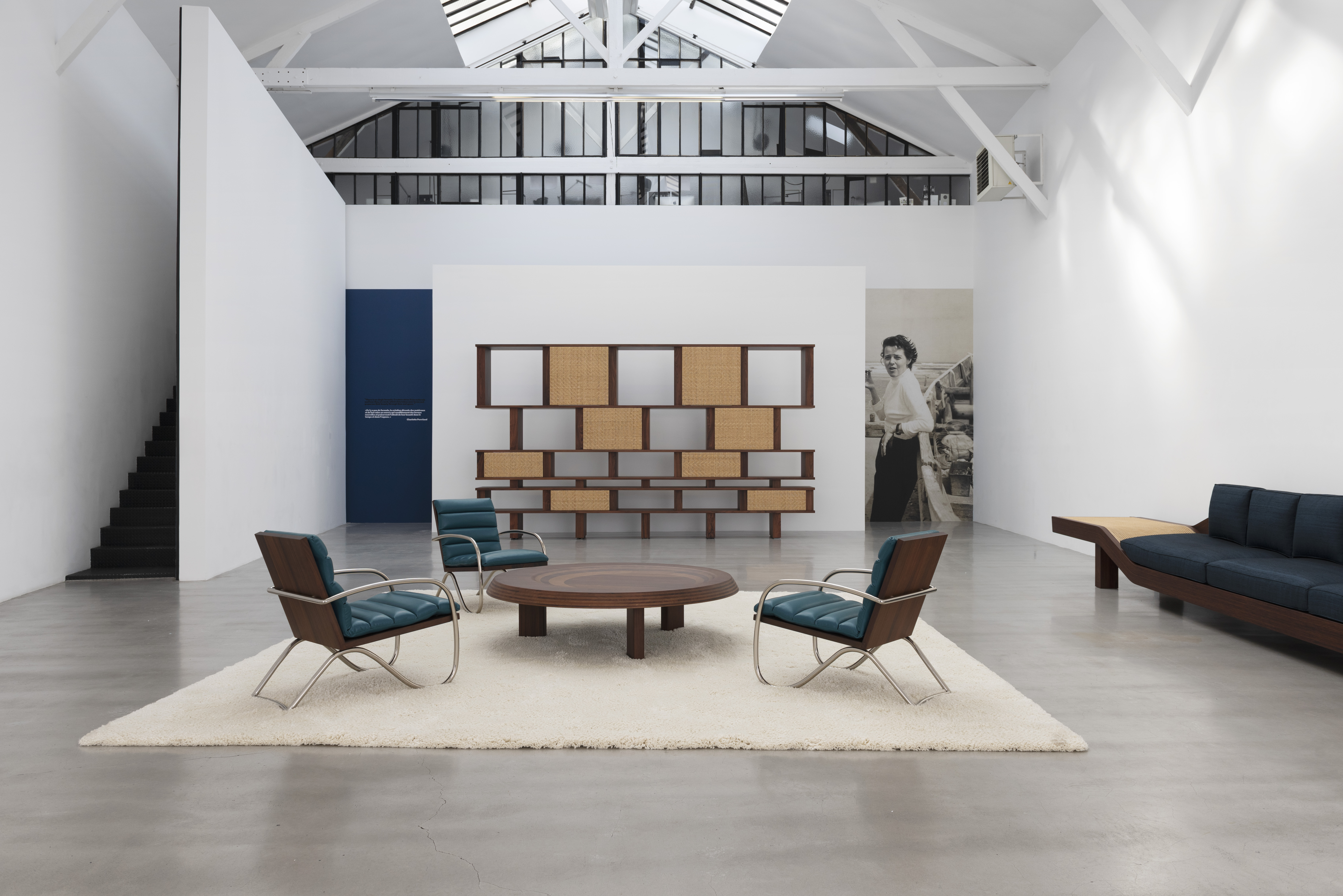 Saint Laurent's Anthony Vaccarello curates four rare Charlotte Perriand reissues
Saint Laurent's Anthony Vaccarello curates four rare Charlotte Perriand reissuesThese lesser-seen Charlotte Perriand furniture designs are reissued in a limited edition and on display at Paris' Galerie Patrick Seguin (until 22 November 2025)
-
 Charles Zana's fantasy interiors are on display in a Parisian apartment
Charles Zana's fantasy interiors are on display in a Parisian apartmentThis week, Charles Zana presents new, extra-large furniture designs in an apartment overlooking the Tuileries gardens
-
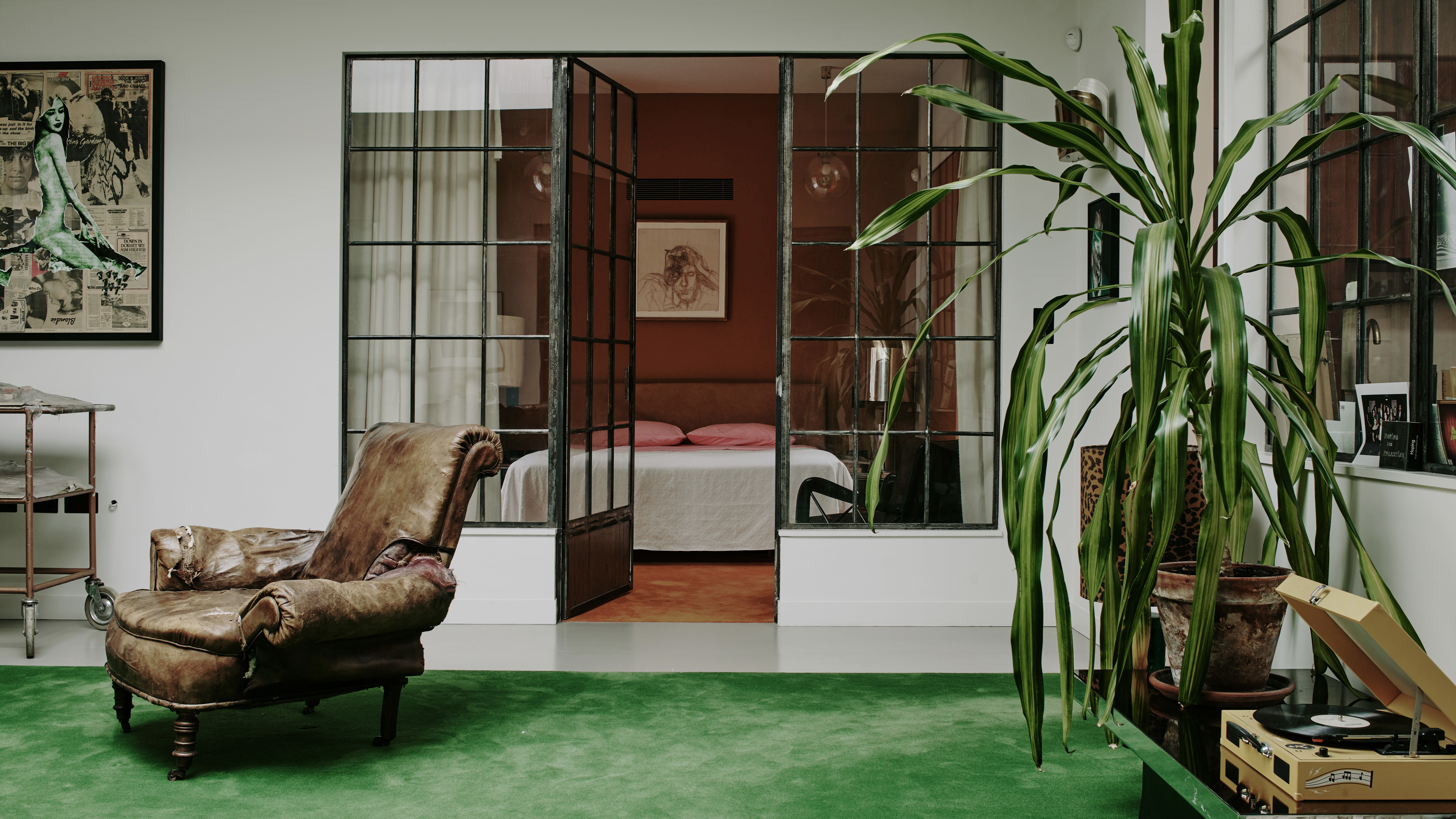 A new coffee table book proves that one designer’s trash is another’s treasure
A new coffee table book proves that one designer’s trash is another’s treasureThe Rizzoli tome, launching today (16 September 2025), delves into the philosophy and process of Retrouvius, a design studio reclaiming salvaged materials in weird and wonderful ways
-
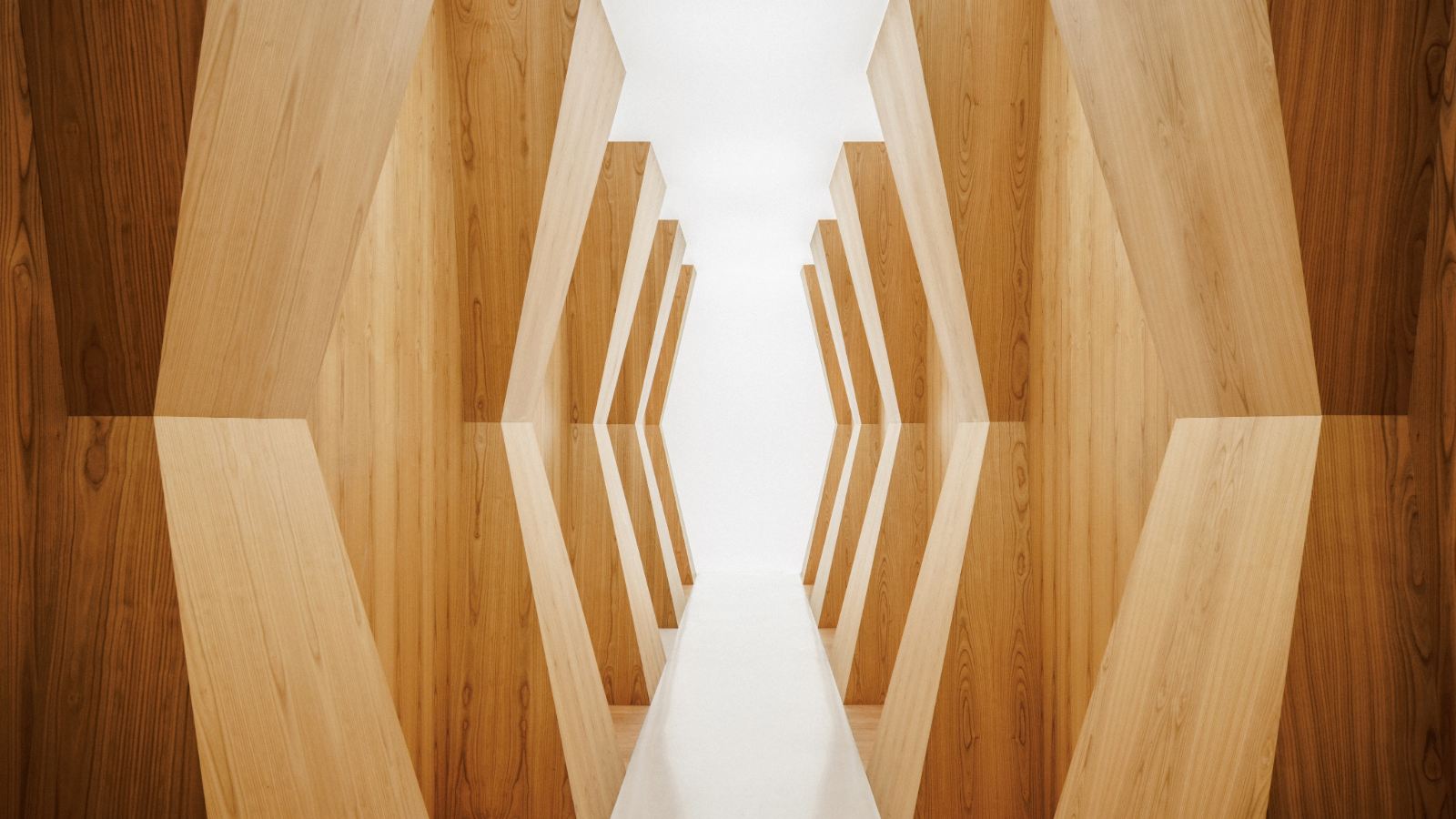 ‘Reimagining the medical facility as a sanctuary of restoration’: welcome to Zoī Vendôme, Paris
‘Reimagining the medical facility as a sanctuary of restoration’: welcome to Zoī Vendôme, ParisYoung Mexico-based architecture practice Sala Hars injects a healthy dose of drama into Zoī Vendôme, a minimalist health centre in Paris
-
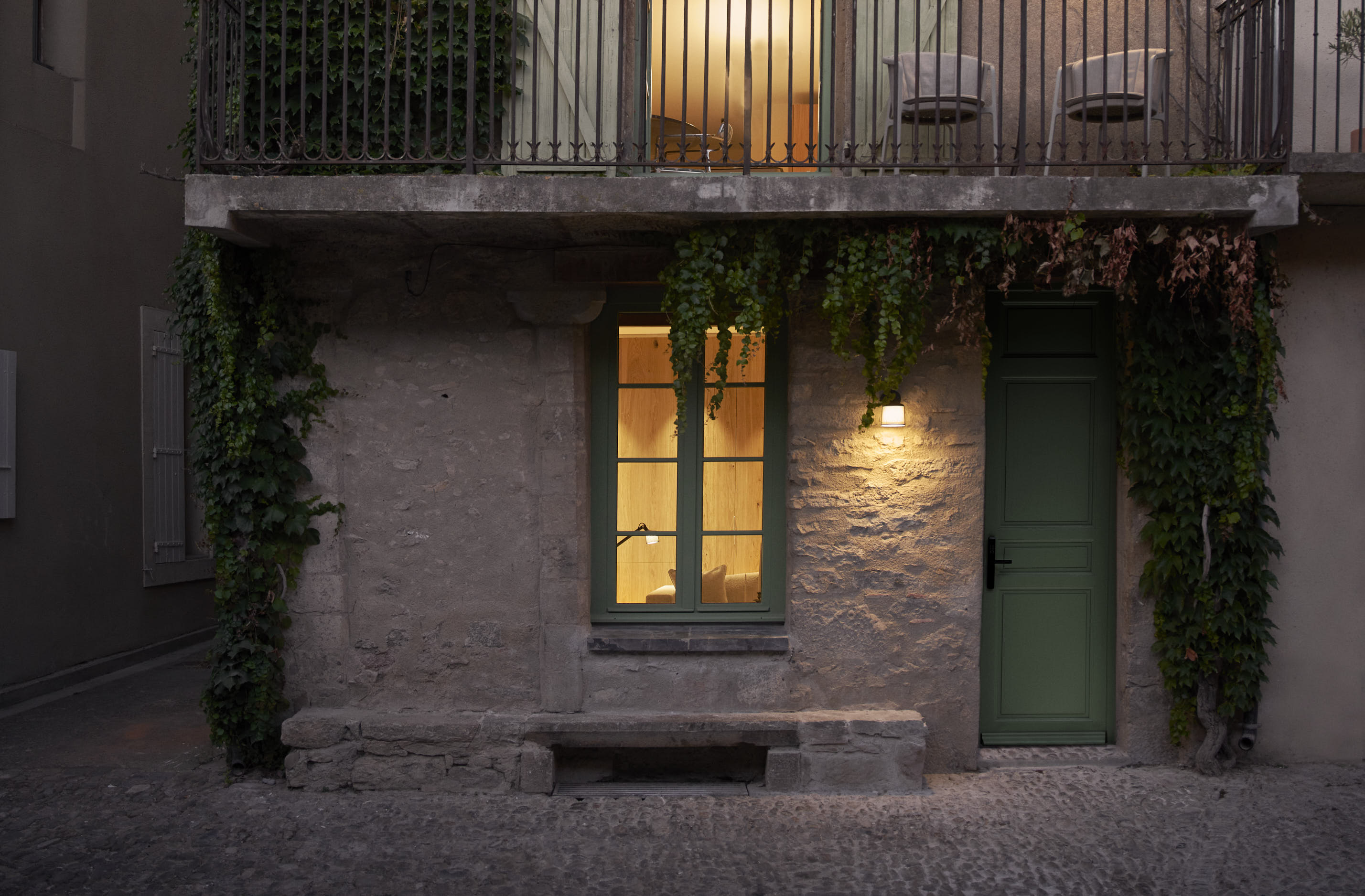 Most people know Vipp for its pedal bin. The brand has just opened a guest house in France
Most people know Vipp for its pedal bin. The brand has just opened a guest house in FranceA 14th-century home is outfitted in Vipp’s signature Scandi style – and you can stay there
-
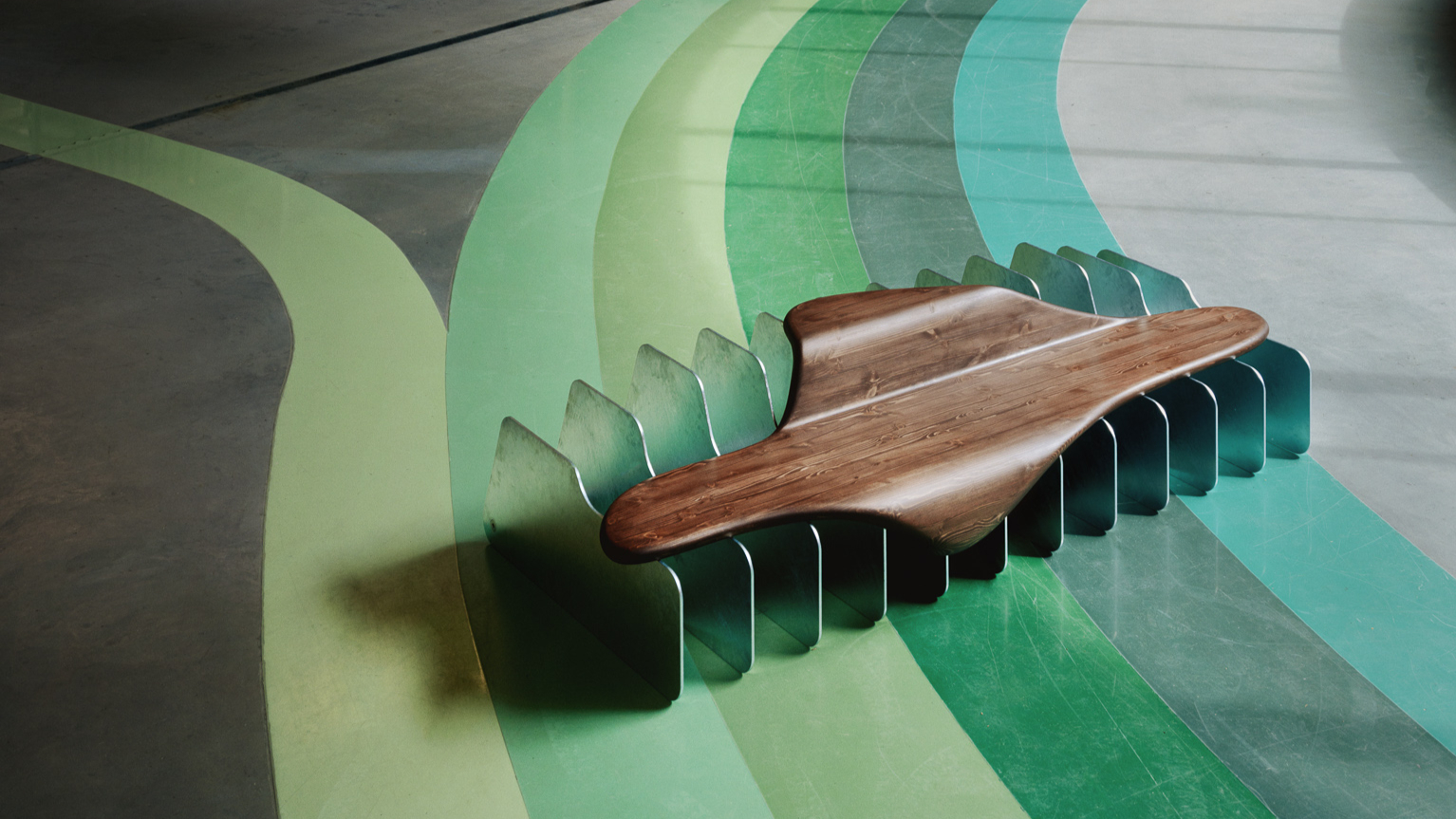 Vestre’s neo-brutalist furniture will bring ‘a little madness’ to Paris Fashion Week
Vestre’s neo-brutalist furniture will bring ‘a little madness’ to Paris Fashion WeekBound for Paris Men’s Fashion Week this month, Norwegian furniture brand Vestre reveals a sculptural bench and mirror created with designer Vincent Laine and fashion creative Willy Cartier – the latest outcome of its risk-taking ‘a little madness’ initiative